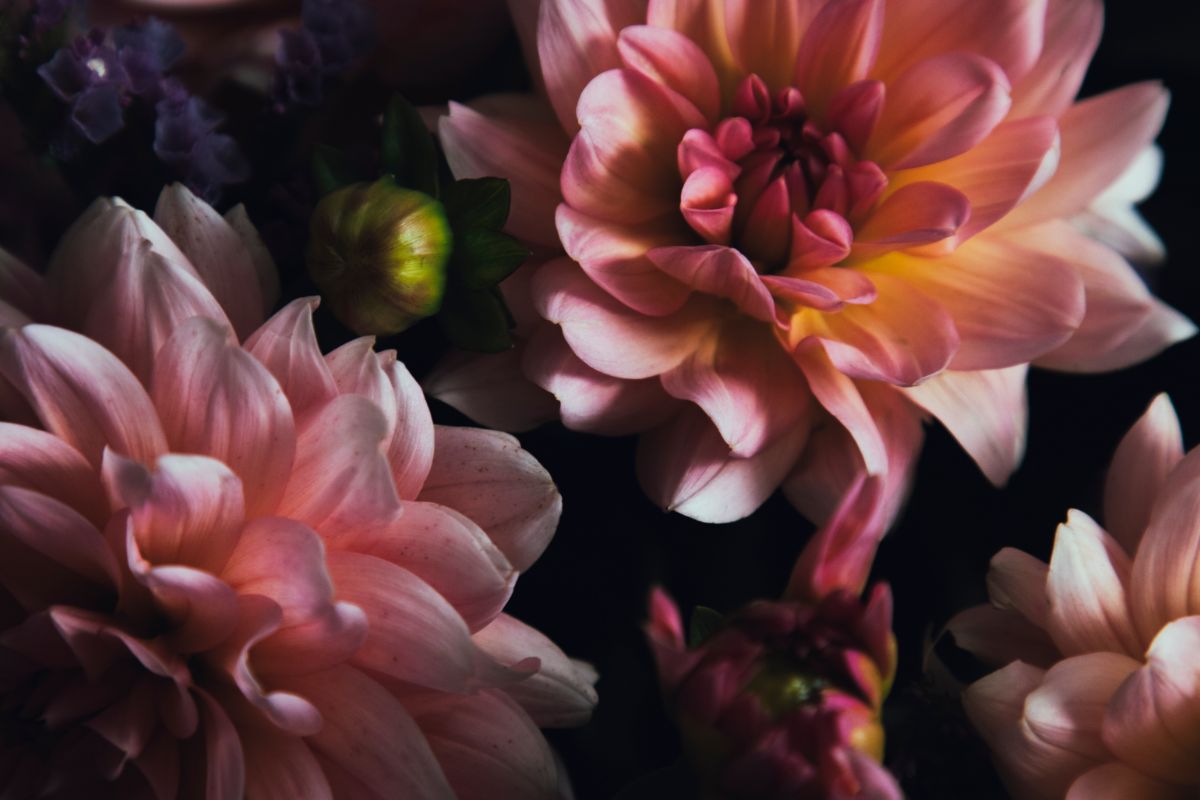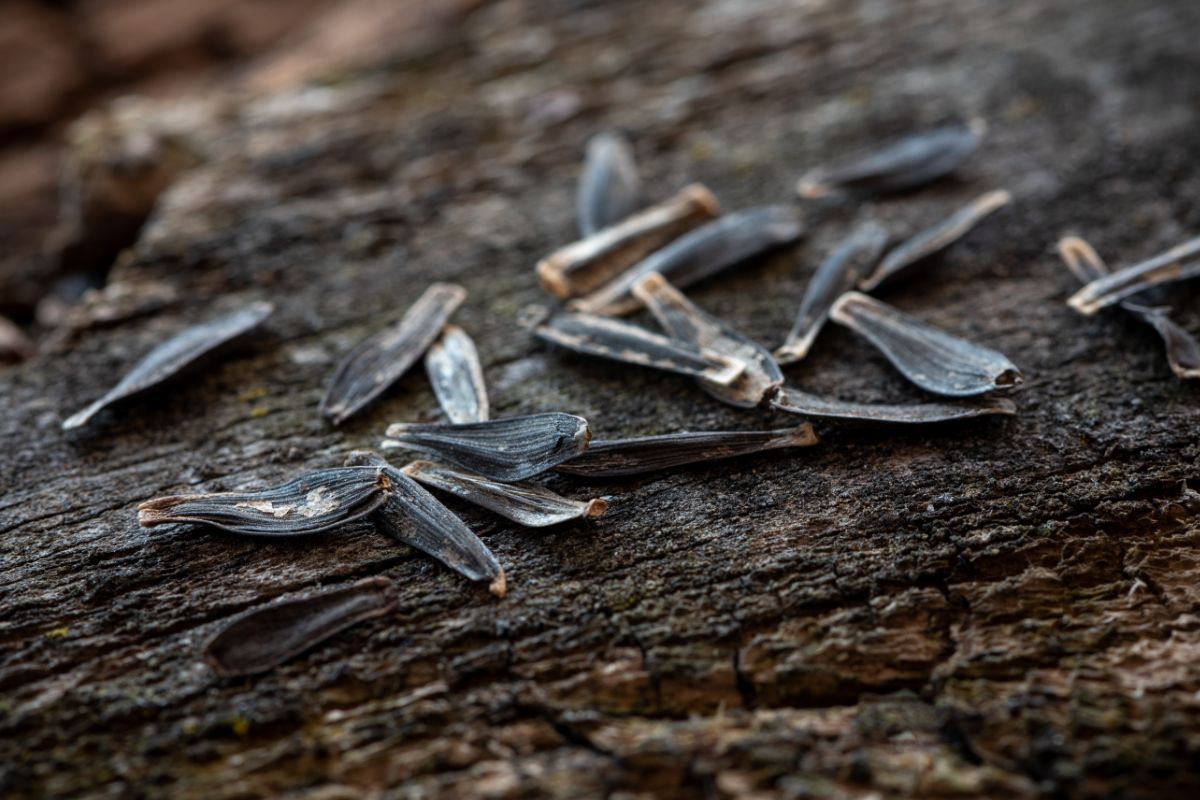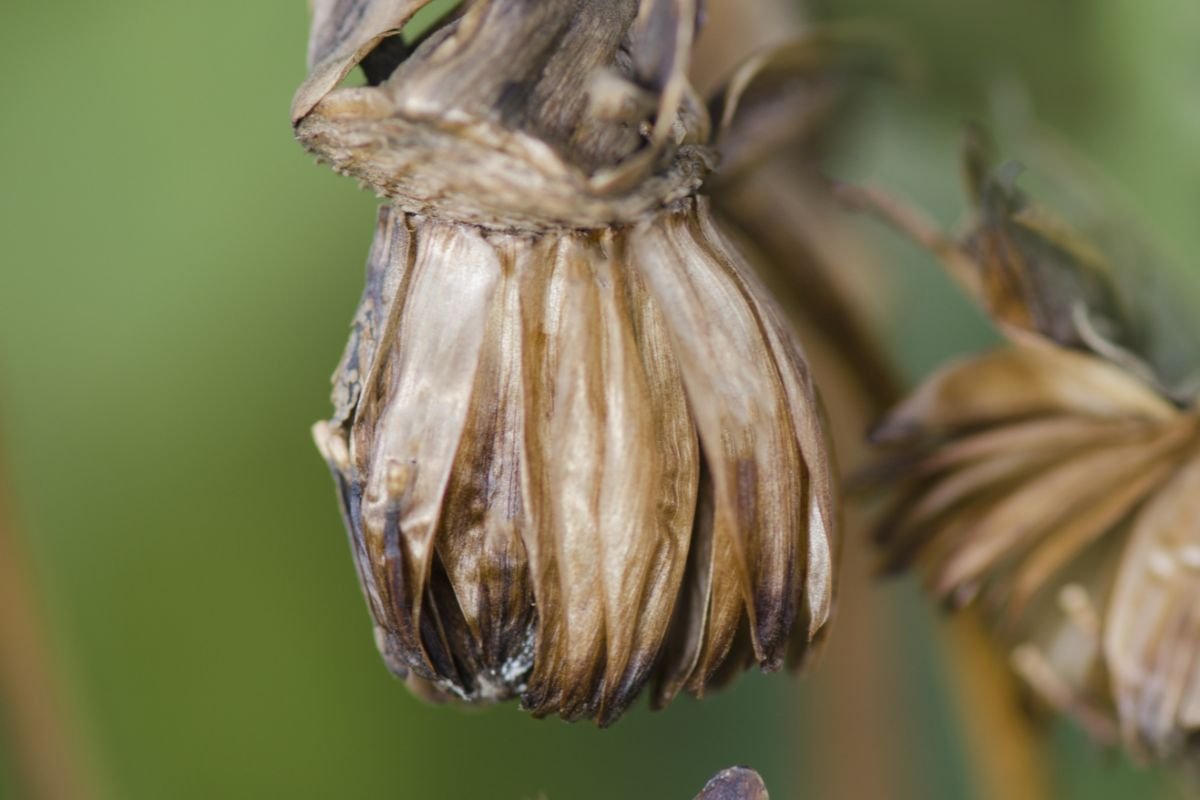Dahlias are perennial plants that have some of the most stunning flowers you could dream of. These plants are usually easy to care for, but this can vary depending on where you are or the Zone you are in.

Since these are such beautiful flowers, they are incredibly popular – everyone wants these in their garden! We don’t blame them, either.
Not only are these plants a real showstopper in the garden, but with so many potential variations, they are very exciting plants to grow, too. The fascinating thing about dahlias is that these plants have eight (8) chromosomes!
This means that they are very diverse, so they can come in all kinds of shapes and colors. Colors can vary from beautiful creamy whites to near black, with every color in between!
Not only that but these flowers can have completely different appearances based on the number and shapes of their petals.
Some of the most popular dahlias include the novelty fully double (e.g. polka, platinum blonde, and Bloomquist pincushion), collarette (e.g. Teesbroke Audrey, Pooh, and Mary Evelyn), and the stellar dahlia (e.g. Irish pinwheel, Camano pet, and Alloway candy).
If you would like to try your luck with growing your own dahlias from seeds and see what you get, just keep reading. We will go through everything you need to know about harvesting seeds and storing them so that you can be successful!
What You Need To Know About Collecting Dahlia Seeds
It’s important to point out that the seeds you collect will never bloom true to the parent plants. Every seed that germinates will be its own new hybrid – which means that you may have the opportunity to grow a never-before-seen dahlia!
So, do not go seed collecting and expect those seeds to turn into the ones that look like the parent plants. With eight chromosomes, this is simply not the way of dahlias!
This means that every plant can be something new and exciting, and you will always have something fun to look forward to and document.
With that being said, you should know that collecting dahlias seeds can be quite a process, and storing them needs to be done properly. Even if you do everything right, there is no promise that all the seeds will germinate, especially if you live in a colder climate.
Every Zone’s Timing Will Be Different
Since dahlias are tender tubers, they do not do well in frost and cold climates. As such, the timing for dahlia flowers will vary from state to state depending on temperature and overall climate.
Generally, however, it is recommended to start these plants off in the early spring undercover somewhere. By the time late May or early June comes around, the weather should be good enough (if you’re in the Northern Hemisphere), to plant them outside.
Luckily, since these plants are perennials rather than annuals, all the hard work that you put into growing them does not need to be done every year. Even so, you can never have too many dahlias, so you can just keep planting these beauties!
Is It Possible To Save Seeds From Dahlias?
Yes! It is absolutely possible to save seeds from dahlias (thank goodness, right?). However, you need to ensure that bees have fertilized the flowers via open pollination first. This way, the flowers should develop pods with seeds.
As we mentioned above, with eight chromosomes, every dahlia seed will have a unique and beautiful plant. With such vast genetic differences, you never know what you are going to get, but this only adds to the excitement.
If you are able to, you should save dahlia seeds and try growing them from scratch. Just be aware that the plants you get from these seeds might be underwhelming. However, you could also be over the moon with what you get – it’s all part of the surprise!
The Dominant Traits Of Dahlias
The majority of plants from these seeds tend to have single blooms with open centers. These simple designs are the most common and dominant characteristics.
All the variations of dahlias come from carefully done selective breeding over the years to create the stunning hybrids we are all familiar with.
However, the dahlias with single petals and open centers are the most dominant simply because it is easier for the plants to get pollinated!
Just remember that if you are growing a variety of similar plants close together, there’s a good chance that the bees will cross-pollinate the blooms. This could be good or bad, depending on what you want to achieve!
If you would like to get different forms and blooms, then make sure to encourage cross-pollinating by doing this. Just remember that getting the exact results you are hoping for is probably one in a thousand.
If you get lucky, though, you could get a dahlia that is worthy of registration. For anyone who would like to better their odds, you could always transfer pollen yourself!
By doing this, your odds of getting a registration-worthy dahlia go from one in a thousand to just one in a hundred. Now that is a number you can work with, right?
Dahlia Seed Pods

Dahlia seed pods will form if the plant’s flowers either get pollinated via the bee’s hard work or through a hybridizer spreading pollen.
As we mentioned above, if you are after a very specific result in your flower cross-breeding, you should do the cross-pollination yourself to improve your chances.
However, if you simply want to see what nature comes up with, why not leave the bees to do their job? This will make everything even more exciting, as you never know what you will get (to an even greater extent, anyway).
Once the dahlia has been pollinated and fertilized, the bloom will eventually get spent. At this point, the wonderful petals will dry up and fall from the plant, and the pod will slowly close until it is shut.
What Do They Look Like?
The pods are typically rounded and plump. One end should be pointed (this is the side where the bracts closed and is actually the opening). They will start off as green bulbs and gradually change color to tan or yellow, or maybe even a darker brown.
The darker the flowers were when they bloomed, the darker the seed pods will be, so bear this in mind! The middle of the flower pods will be black when they are mature.
However, as the pod dried out and continues to mature, the whole thing will get a papery texture and turn brown. Only after between 6–8 weeks after pollination will the pod be fully mature.
Dahlia Seeds
Okay, this part can get a little confusing if you do not know what you are actually looking for. However, once you learn the difference between viable and non-viable seeds, you will breeze through without issues.
In terms of shape, dahlia seeds are long and relatively flat. They are slightly narrower on each end. The size of these seeds should be under ½ an inch – so they are pretty small, but nothing compared to some other tiny flower seeds!
Non-viable seeds are seeds that either did not get pollinated in the first place or simply are not viable for another reason. These seeds are significantly smaller than the viable ones – roughly half the size, and they are lighter in color.
Viable dahlia seeds, however, should be dark brown or even black when they are mature and ready to be harvested.
These seeds are nice and firm, which makes them easy to find in between the chaff when you are collecting seeds. More often than not, any hard bits you feel will be the mature seeds.
When Should You Collect Dahlia Seeds?
The timing of collecting dahlia seeds is crucial if you want to get ones that are viable. Unfortunately, there is no set date or month that we can give you, as the correct timing will depend on where you are in the world or country.
Different climates and Zones will have different dates, and these could even change year by year. No matter what, however, you must always allow the dahlia seed pods to properly mature on the plant before you begin collecting.
You should always try to leave the pod attached to the plant for as long as possible, and you are likely to get the best results. Not sure when the seed pods are ready to be collected? You can easily check their maturity by gently pulling back on the pod bracts.
If you pull the bracts back and find a large black or dark brown seed inside, it’s a good indication that the pod is mature enough to be harvested. The above method does not always work, though. Sometimes, you will not see any seeds when you pull back the bract.
It is not uncommon for pods to have very few seeds, or even for the seeds to be much deeper inside the pod where you can’t easily get to them. You could try gently squeezing the seed pod as another means of checking whether it is mature or not.
If you do this and any liquid comes out of the top, it is a clear sign that the pod is not mature enough to be collected yet. You want it to be completely dry!
With that being said, there may be circumstances where you need to harvest the seeds before the pods are fully mature. More on this in the “collecting dahlia pods” section!
How To Collect Dahlia Seeds?
Now the fun starts! The time has come to collect the seeds you have so eagerly been waiting on – but how do you do that? Let’s take a look at what you need to know.
Collecting Dahlia Pods
Depending on how mature the pods are when you are collecting them, you may pick a different approach. For pods that are already fully matured and have been allowed to mature attached to the plant, you can simply snip the pods from the stem.
However, if your pods need to be collected earlier, you should aim to follow the below steps:
- Cut the pod stems around 6 inches down (this gives you the chance to keep the stems in water if you need to do so)
- Ensure that you label your pods (note down the parent plant name/type and whether you pollinated it or the bees did). The labels need to be securely attached somewhere so that you know what you are dealing with
- Get your pods inside and find somewhere dry and warm for them to stay. Lots of people like to hang the pods out to dry for a couple of months before they harvest the seeds – this is up to you!
- You can put the pod stems in jars or vases (just like you would do for flowers) if they need to dry out more. Give them two weeks!
- Give the pods some more time to mature if they need it, and allow them to thoroughly dry out so that you can harvest the seeds
- Make sure you change the water throughout the process so that you do not have to deal with smelly and stale water
- When the seed pods look nice and dry or mature, you can remove them from the stems and dry them out even further on a tray or something similar
- When the pods have dried out, it is time to collect!
Collecting Dahlia Seeds

You should only aim to collect your dahlia seeds once the pods have completely dried out. You could do it sooner, but waiting until they are dried out makes the process so much easier.
At this stage, the pod’s content will easily be pulled away from the case, and you don’t need to struggle with it – making it so much more pleasant.
You may need to collect the dahlia pods early if you are expecting heavy rain or frost, which could destroy or rot the pods. To collect the dahlia seeds, you can follow these simple instructions:
- Find a surface that is clean and dry to work on. Ideally, your surface should be a light color to prevent any seeds from being lost, but you can place a cloth or even paper on the surface to do this.
- Simply pull the dahlia pod apart with your fingers. Feel free to use gloves if you really like, but this is not necessary. You will have a combination of seeds and chaff when you have removed everything from the pod base.
- Time to start looking for the seeds! These can be difficult to find among all the chaff, so remember what the seeds look like (we went through this in a previous section). You will need to pull the seeds from the chaff, so look carefully since the colors can be pretty similar (the viable seeds will be dark and solid).
- Make sure you put your seeds in a container or somewhere else you won’t lose them!
- Be aware that not every pod will even have seeds, and some have very few. This is especially the case when it comes to viable seeds.
Storing Dahlia Seeds
Before you can even think of storing your dahlia seeds, you will need to dry them out. You can simply leave the seeds out in a dry, warm place for around 24 hours until they are sufficiently dried before storing them for later use.
Make sure you leave your seeds to dry out in a single layer rather than on top of each other. You might want to move them around every few hours or turn them over, just to make sure they dry out completely.
How To Properly Store Dahlia Seeds?
The best way to store any kind of seeds will be in paper – like a paper envelope. Avoid using plastic, as plastic can sweat and cause mold on the seeds. Paper will keep everything nice and dry.
Make sure that you label the envelope, too! Make a note of the pod parent, and if you did the hybridizing, the plant you crossed it with. This will just let you know what’s what. If the parents are not important to you at all, you could always skip this step.
Once in the envelope, you should store your seeds in a cool, dry place until you are ready to use them. Make sure to keep them away from heat and moisture!
The Basics Of Dahlia Propagation
If you live in one of the warmer growing zones, you may be able to overwinter the tubers in the ground. However, this will not be the case for most people, and the majority of growers will need to lift and divide the tubers come fall when the weather dips.
This is because these plants do not handle frost well, so they will simply do better if they are lifted. The great thing about dahlias is that they can be grown or propagated using a variety of methods: seeds, cuttings, and dividing tubers!
It should be pointed out that in the case of dividing tubers and using cuttings, you will get plants exactly like the parent plant, as these will be clones.
If you would like to get different dahlias, you will need to grow the plants from seeds! In the case of the other two methods, this is great if you would like to have replicas of a plant you already love.
In both cases, tubers and cuttings will eventually take root and turn into new plants, provided you give them everything they need to flourish.
So, if you would like to get some variety, make sure that you collect dahlia seeds and grow them from scratch. You should also absolutely document the process and see what you end up with!
Final Thoughts
Collecting dahlia pods and seeds is so much easier than you thought, right? The process is very straightforward, but it can be time-consuming if you are not sure what to expect. Just remember that not every pod will contain viable seeds – this is normal.
The viable seeds, which are black or dark brown, hard, and flat, should be easy to locate within the chaff once you know what to look out for.
Remember to let your seeds properly dry out before you store them, or else they could rot! Hopefully, you get some stunning dahlia flowers, because you never know what to expect with these plants.
- Interesting Flowers That Start With A - July 21, 2023
- Interesting Flowers Beginning With H - July 21, 2023
- 14 Fascinating Flowers That Begin With C - July 20, 2023
